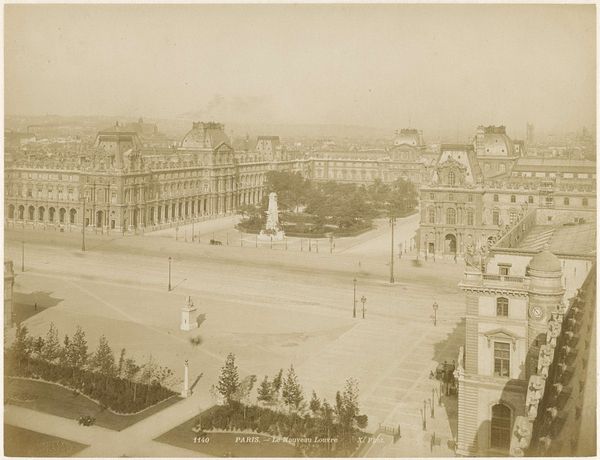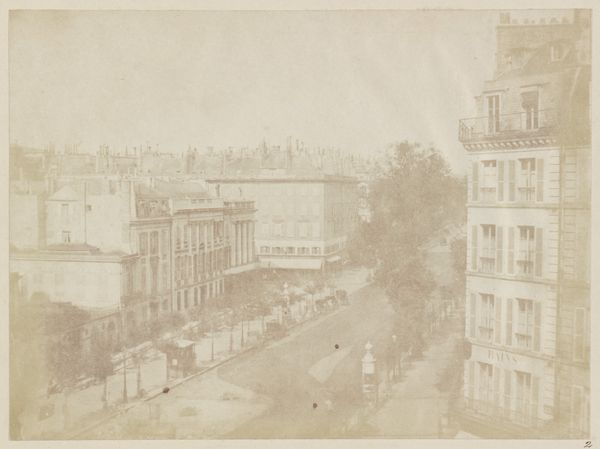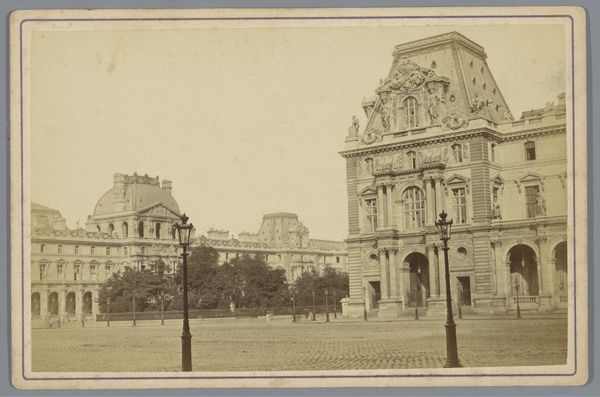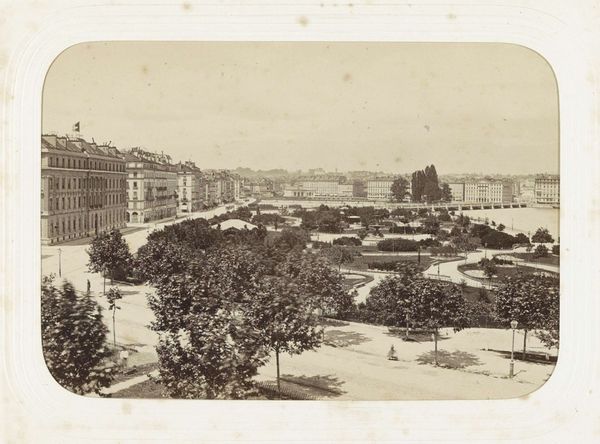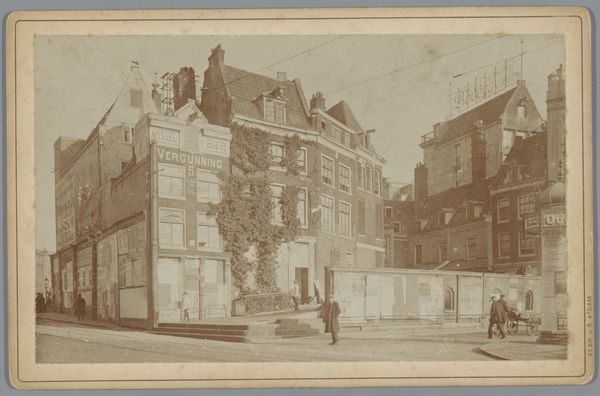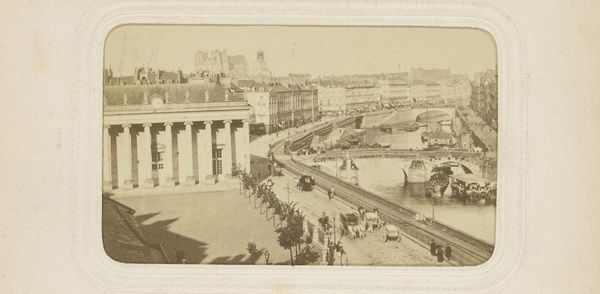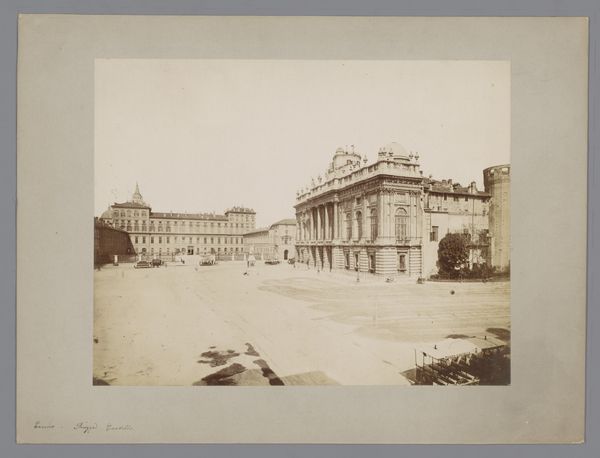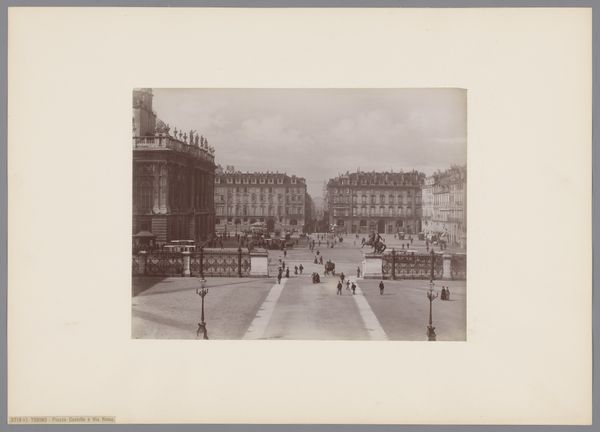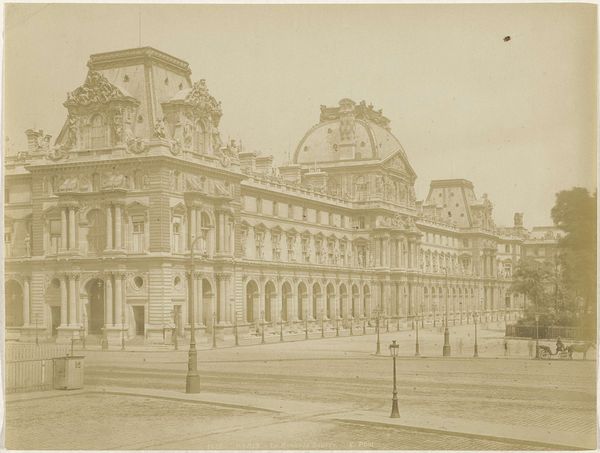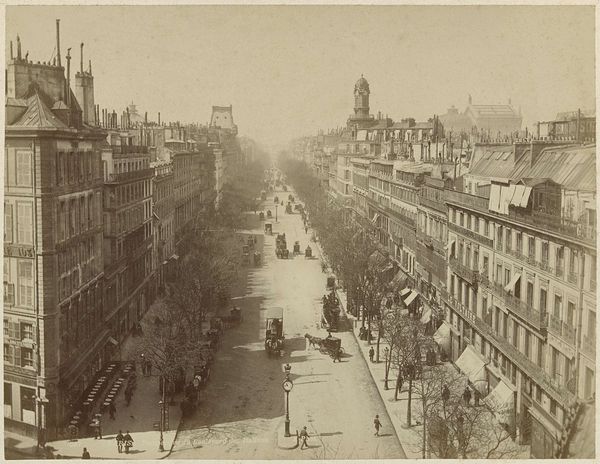
photography
#
pictorialism
#
landscape
#
photography
#
historical photography
#
19th century
#
cityscape
Dimensions: height 53 mm, width 86 mm
Copyright: Rijks Museum: Open Domain
Editor: Here we have Joseph Kirsch Fils's "Place du Théâtre in Luik", a photograph dating back to somewhere between 1870 and 1890. It’s a fascinating slice of 19th-century cityscape! Looking at it now, I am immediately drawn to the intricate detail captured despite what must have been limited photographic technology at the time. What stands out to you? Curator: The photograph is interesting in what it presents, but also, crucially, in what it omits. While the image certainly offers a snapshot of architectural grandeur and daily life in Liège, what underlying socio-political context is framed by this seemingly straightforward cityscape? Do you see any hints? Editor: I suppose I hadn’t considered it like that... Now that you mention it, the clarity of the architecture versus the blur of the people almost creates a hierarchy. It makes the buildings seem grander, and perhaps more important, than the individuals inhabiting the space. Curator: Exactly! Photographs from this period, often commissioned or created with a specific purpose, like advertising civic pride or attracting investment, weren’t always objective documents. Instead, they reflect how cities wanted to be seen. How do you think the depiction of the theatre itself – the 'Place du Théâtre' – factors into this self-presentation? Editor: Perhaps the prominent placing of the theatre showcases the city’s cultural sophistication? Or how progressive the city aimed to appear on the world stage? Curator: Precisely. The image becomes a curated statement of identity and ambition, worthy of further historical digging. Editor: I hadn't thought about how photography could shape those kinds of narratives. This makes me want to dig deeper into this era! Curator: Exactly! Analyzing visual imagery is the key to unveiling those forgotten layers of social and cultural history.
Comments
No comments
Be the first to comment and join the conversation on the ultimate creative platform.
